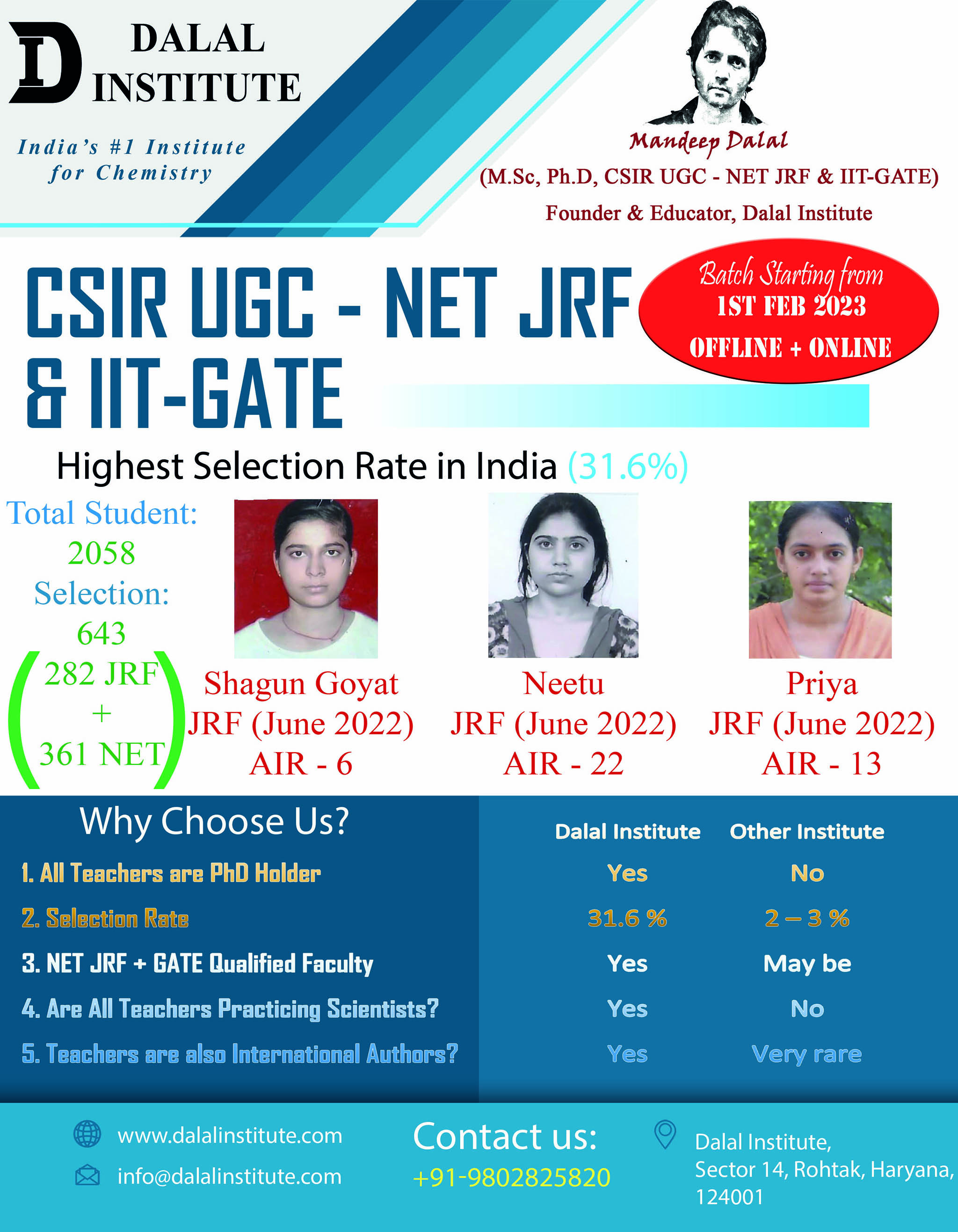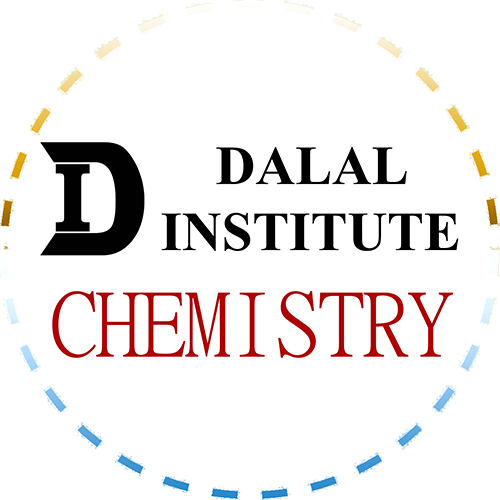This course will cover the chemistry’s syllabus of CSIR-JRF, UGC-NET, IIT-GATE, M.Sc, UPSC, HPSC, ISRO, IISc, TIFR, DRDO, BARC, UPSC, JEST, GRE, Ph.D Entrance and all other PG level competitive-cum-academic examination.

Yes, you will get PDFs of individual chapters of all 8 Books specially written for "CSIR UGC - NET JRF and IIT-GATE (Chemistry)'. All you would need to to is call us on our official number.






Course kitne time tk valid h
5 months and 20 days. Validity will be extended for another 5 months free of cost if you are unable to attend all the lectures in the given time period.
Hi sir Gd evening
Sir NET ka course purchase karna hai
Please sir
Demo video kaha milega
Hello Nathu …. Please WhatsApp Dr. Mandeep Dalal on 9802825820
Here I need only material is it possible
Sorry Sir, the study material is only available as a part of our online course.
Sir online kis platform pr hume coaching mil sakti
i am doing msc chemistry 2nd sem or app or online fee kitni hogi ?
Sheetal….beta Dr. Mandeep Dalal this side. Call me tomorrow on 9802825820, and I will let you know the whole procedure.
csir net chemicals science online coaching details
Please WhatsApp Dr. Mandeep Dalal on 9802825820
Sir, due to some personal reasons maine course to online le lia tha pr m attend ni kr pai thi lectures. So sir, kya lectures ki validity extend ho skti h please……
Yes… Call Dr. Mandeep Dalal on 9802825820
DEAR RESPECTED SIR/ MEDAM
IAM RESPECTFULLY REQUEST TO
REDUCE FEES FOR ME BECAUSE I HAVE INTREST TO JOIN IN OUR INSTITUTE FOR ONLINE CLASSES
Please WhatsApp Dr. Mandeep Dalal on 9802825820 for 50% discount
Online course fees 12500 h ya 20000
Course videos live hogi ya kabhi bhi dekh sakte h jb hum free ho
Beta, call me 9802825820
Dr. Mandeep Dalal
Sir, study material online ya offline available hoga
And about classes live ya kabhi bhi dekh sakte hai
Call Dr. Mandeep Dalal on 9802825820
Hello sir this is Farid alam . I have taken admission so please activate my account.
Your Account has been activated Farid
Sir will the class be taken in English or Hindi.
Study material is in English but communication language used in our classrooms is Hindi.
Sir agr kbhi online class skip ho jaye to recording mil jayegi kya
WhatsApp Dr. Mandeep Dalal on 9802825820 for full info
For study materials (online course), for how much time can we have the access? Also, do we get recorded or on-demand sessions? In case if the sessions we aren’t able to attend in the given time frame, do we get some extra time for the completion?
please WhatsApp Dr. Mandeep Dalal on 9802825820
Hlo sir study material is available in offline class like notes or books because in January i want to apply for your batch
Hello jatin … please WhatsApp Dr. Mandeep Dalal on 9802825820
Hii sir I just want to purchase advance inorganic chemistry book volume 2